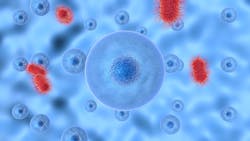In the pursuit of accurate diagnoses for illnesses, doctors have traditionally used multiple methods — including culturing patient samples on a wide variety of media, reviewing countless medical records and analyzing clinical data using complex mathematical algorithms — to try to identify the bacterium, virus, fungus or other pathogen responsible for an infection. The hunt is often slow and laborious, and the processes used may not be broad enough in scope to find specific disease agents.
One solution may be next-generation sequencing (NGS), according to the findings of a recent study by Johns Hopkins Medicine researchers. NGS enables clinicians to simultaneously sequence multiple strands of DNA found in patient samples and use that analysis to rapidly and accurately identify a single pathogen — from among hundreds of suspects.
In a paper first posted online June 13, 2022, in the American Society for Microbiology’s Journal of Clinical Microbiology, the researchers compared the pathogen detecting ability of an NGS system — the Respiratory Pathogen Infectious Diseases/Antimicrobial Resistance Panel (RPIP) — with a previously studied NGS system and standard of care (SOC) diagnostic methods for samples obtained with bronchoalveolar lavage. This is where a bronchoscope is passed through the mouth or nose into the lungs, followed by a fluid wash that is collected for examination.
The researchers believe their study is among the first to compare NGS and SOC diagnostics for respiratory pathogens.
In their study, researchers first evaluated the diagnostic ability of metagenomic NGS, a previously studied workflow process during which all DNA obtained from a bronchoalveolar lavage is sequenced — including genetic material unique to the patient (the "host read" or "human read") and the sought-after pathogen (the "microbial read"). Removing the host DNA enable clinicians to concentrate their search on the remaining genetic material to hopefully find the microbial read and ultimately, identify the cause of the patient's illness.
In the second part of their experiment, the researchers assessed a different NGS approach using the RPIP system called targeted NGS. In this method, everything in the patient respiratory sample is sequenced as with metagenomic NGS, but capture probes — tiny fragments of single-stranded DNA that correspond structurally to the DNA of specific pathogens — are used to enhance the searching ability.
The researchers found that the effectiveness of both the metagenomic and targeted NGS varied with the type of organism sought. They report that both NGS methods successfully identified viruses, with herpes viruses the most readily detected. Results for bacteria and mycobacteria (which include the organism causing tuberculosis) approached the level of SOC diagnostics, but dropped off as the number of organisms decreased — even with use of the capture probes in targeted NGS. Neither NGS method detected fungi well.
Overall, the researchers found that the RIPP targeted workflow agreed with traditional diagnostics 66% of the time. More specifically, they noted a 46% agreement for targeted NGS to detect pathogens of clinical importance and an 86% agreement for showing that pathogens were absent.




